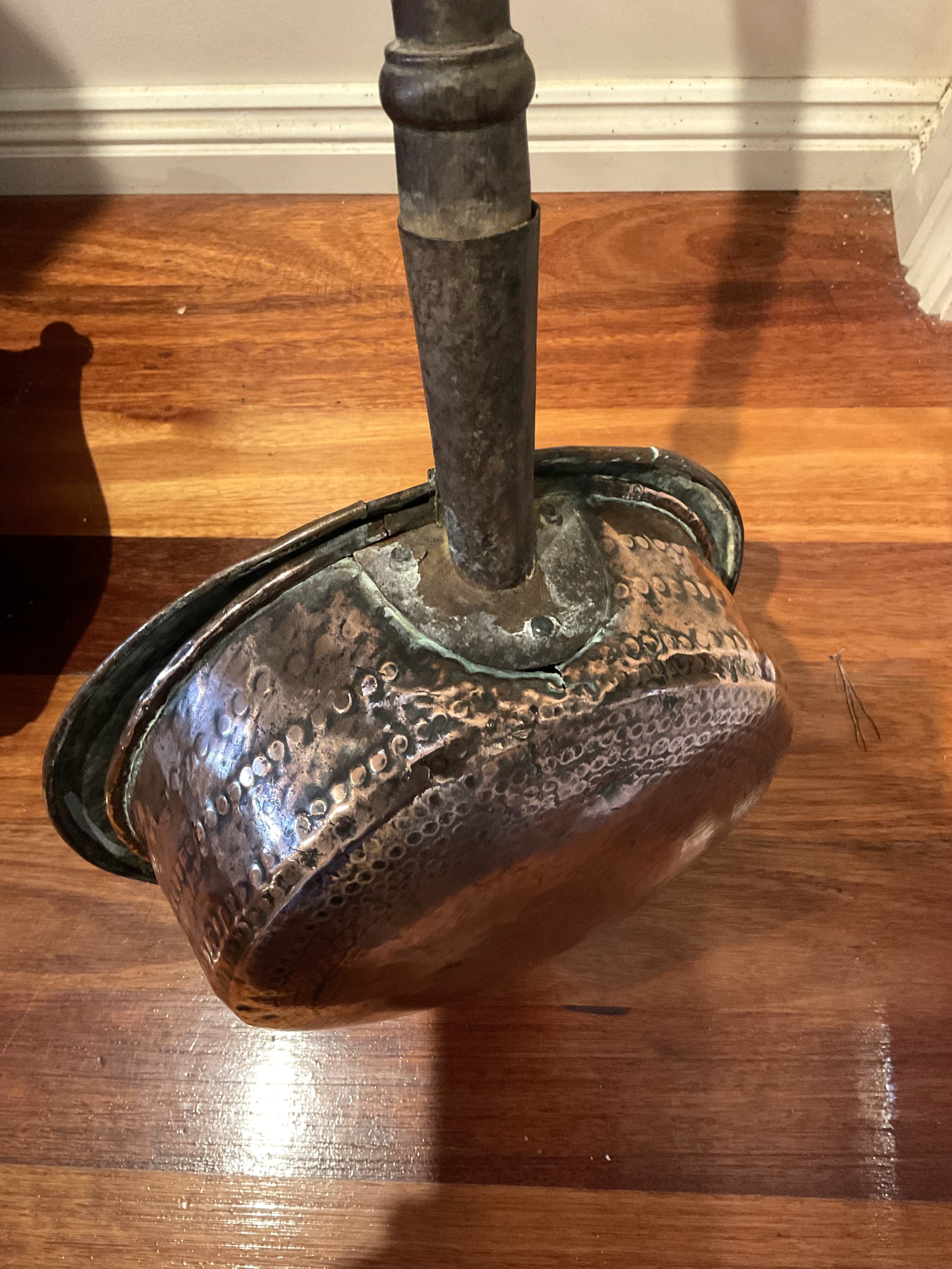 Image 1 of 7
Image 1 of 7

 Image 2 of 7
Image 2 of 7

 Image 3 of 7
Image 3 of 7

 Image 4 of 7
Image 4 of 7

 Image 5 of 7
Image 5 of 7

 Image 6 of 7
Image 6 of 7

 Image 7 of 7
Image 7 of 7








Vintage Copper Jelly Mould
This lovely copper jelly mould has been made in Portugal. It features a fluted edge and circular patterns at the base. Ready for making jelly or to hang in the kitchen to create a warm kitchen atmosphere.
In the past, making jelly was an art form and reserved only for the wealthy. This was because the process required access to ice, which was a luxury. Sweet jelly required sugar which was expensive up until the 19th century. Before the introduction of gelatine, the process of extracting setting agents, (from calf’s feet, deer horn or the bladder of a sturgeon), was time consuming and required skill. The first jellies recorded date back to the 1300s and comprised mostly of fish and meat (aspic). These jellies were flat, not moulded as we know today. Moulds such as egg shells and scallop shells were used in the 1500s. During the 17th century, moulds as we know them today were used for potted meats, pies and cakes, blancmanges and puddings as well as jellies. In the late 1700s, ceramic moulds featuring beautiful patterns became popular. The peak time of jellies was during the French Regency period where white wine jellies were popular. Shaped in many different forms, jellies were elaborately decorated using candied peel. Layered ribbon jellies were used to make checked patterns. Jelly moulds with intricated liners were used to produce marvellous creations. A fruit or cream centre became visible through a layer of clear jelly. The French were very fond of moulded jellies. Jellies and aspics reached their pinnacle in the court of Napoleon at Chateau de Valencay. The imperial chef, Marie-Antoine Careme came to fame. She created extraordinary structures that were several feet high and elaborately decorated with marzipan and nougat. She also impressed Napoleon’s guests with gleaming, gelatinous towers embedded with truffles, chicken pieces or calf’s tongue. The book, ‘The Royal Parisian Pastrycook and Confectioner’ (1834), has an entire section devoted to aspic jelly moulds. Aspics became a staple of haute cuisine and the mark of an accomplished chef.
This jelly mould measures 22 cms across.
This lovely copper jelly mould has been made in Portugal. It features a fluted edge and circular patterns at the base. Ready for making jelly or to hang in the kitchen to create a warm kitchen atmosphere.
In the past, making jelly was an art form and reserved only for the wealthy. This was because the process required access to ice, which was a luxury. Sweet jelly required sugar which was expensive up until the 19th century. Before the introduction of gelatine, the process of extracting setting agents, (from calf’s feet, deer horn or the bladder of a sturgeon), was time consuming and required skill. The first jellies recorded date back to the 1300s and comprised mostly of fish and meat (aspic). These jellies were flat, not moulded as we know today. Moulds such as egg shells and scallop shells were used in the 1500s. During the 17th century, moulds as we know them today were used for potted meats, pies and cakes, blancmanges and puddings as well as jellies. In the late 1700s, ceramic moulds featuring beautiful patterns became popular. The peak time of jellies was during the French Regency period where white wine jellies were popular. Shaped in many different forms, jellies were elaborately decorated using candied peel. Layered ribbon jellies were used to make checked patterns. Jelly moulds with intricated liners were used to produce marvellous creations. A fruit or cream centre became visible through a layer of clear jelly. The French were very fond of moulded jellies. Jellies and aspics reached their pinnacle in the court of Napoleon at Chateau de Valencay. The imperial chef, Marie-Antoine Careme came to fame. She created extraordinary structures that were several feet high and elaborately decorated with marzipan and nougat. She also impressed Napoleon’s guests with gleaming, gelatinous towers embedded with truffles, chicken pieces or calf’s tongue. The book, ‘The Royal Parisian Pastrycook and Confectioner’ (1834), has an entire section devoted to aspic jelly moulds. Aspics became a staple of haute cuisine and the mark of an accomplished chef.
This jelly mould measures 22 cms across.






































